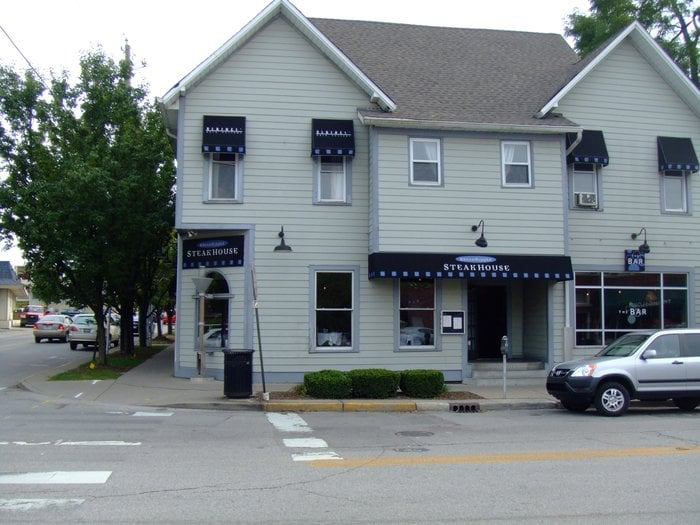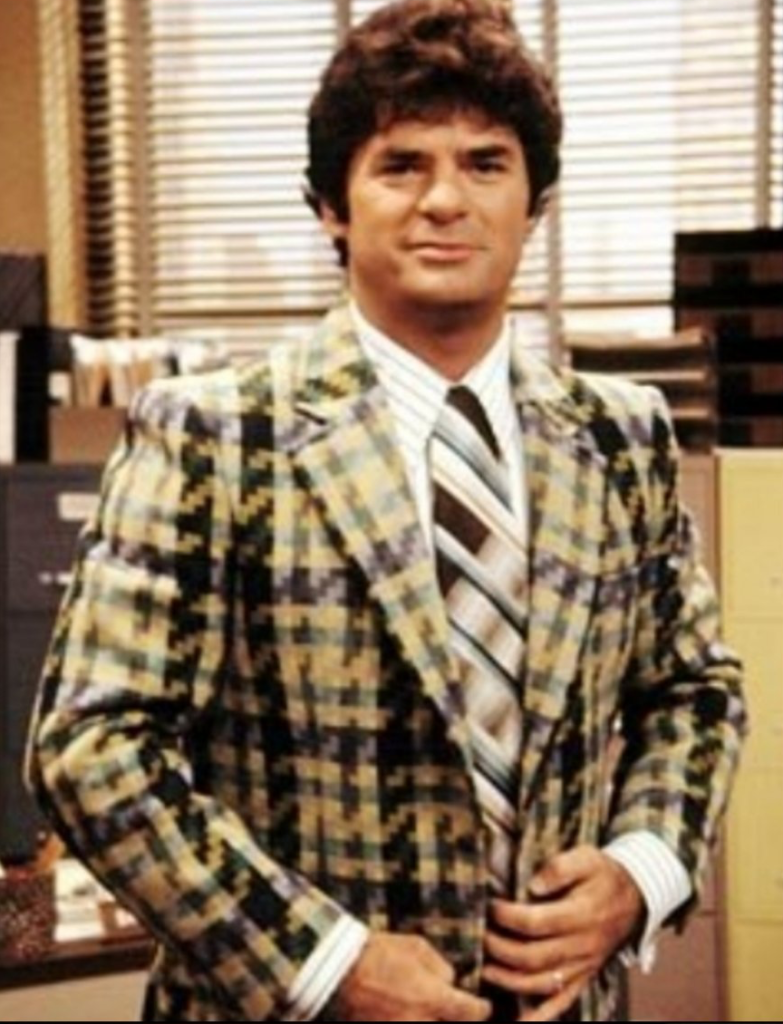There’s a reason Harrison Ford makes $25 million dollars to play Indiana Jones. Ford is one of the most underrated actors out there, and he has a rare ability to wrench emotion out of a badly written scene, which happens often in the Star Wars and Indiana Jones films. He also adds humanity into the action scenes and makes them more plausible.
Consider a brief moment in Raiders of the Lost Ark. Indiana Jones has just stayed up all night rescuing the Ark of the Covenant from its resting place, escaped a nest of snakes and saved his girl from a bunch of mummies. He’s exhausted. The Nazis are about to load the Ark on one of their flying wing airplanes and Indy has to stop them. A giant of a man (Pat Roach) comes up to fight him. Jones waves him off for a moment and then stands up, falling to his knees again, and then stands up to start the fight. His body language tells us that he’s exhausted and is summoning the last bit of energy he has.
It’s just a little slip of a moment, but it tells us a lot about Jones and his character. I’m sure it wasn’t in the script and was just a bit of business that Ford added.
It’s this humanity that made Indiana Jones a popular character. One review noticed that the “de-aged” Indiana Jones in the first part of Indiana Jones V was obviously CGI because it didn’t move like Ford. “Harrison Ford acts with his whole body,” the reviewer said.
So we already know what artificial intelligence, CGI movies will be like, because we have them now. A little plastic, very staged, and kind of lifeless. And we know already what artificial intelligence scripts will get us. All we have to do is watch Batman Vs. Infinity Wars Part 6: A New Beginning to see what that will be like. Those scripts are basically written are by committee, which is really what artificial intelligence is, and any sense of individual expression has been carefully squeezed of of them. The producer wants to hit the main points he wants and then move on. He’ll keep hiring other writers until he gets his way.
We don’t blame the producer for this, but we should. Let’s remember that the job of the producer and a studio head is not to create good movies. They want to create profitable films. If they happen to be good, too, then so much the better.
This is why you can almost predict what a movie is going to be before going into the cinema. This is especially prevalent in Disney pictures of late. We have a new lead female character, strong and assertive, a panoply of supporting characters of different races, and we try to erase the old lead characters from the story. This is what happened in the Star Wars post-quels. We killed off Han Solo, Princess Leia, and Luke Skywalker. And only Luke had a fitting sendoff, but even that was unnecessary. Leia’s death was more understandable in the wake of Carrie Fisher’s actual demise.
This is why it’s entirely plausible that the new Indiana Jones film was going to end with the death of Ford’s character and his replacement with Phoebe Waller-Bridge’s character. I know, it’s been denied in the press by no less than director James Mangold, but if you watch the film, you can see that it was set up in just that way, and test audiences hated it, causing a reshoot. It’s not just that Indiana Jones died, but the death was pointless and, for heaven’s sake, do we have to do this SAME PLOT AGAIN?
Indiana Jones V is actually better than the Disney Star Wars series, because it does manage to have something to say and it uses its characters well. Disney’s Episode VII was almost a direct remake of Episode IV. Episode VIII was at least strongly influenced by Episode V, and Episode IX was an even closer remake of Episode VI, to the point that they even had a clone of the same villain. The philosophy and charisma of the older characters is completely gone.
But they gave the fans what they wanted, they hit on all the key points, just as their Indiana Jones film did. Instead of snakes we have eels. Check. Nazis. Check. Fight on a plane. Check. Ancient booby-trapped temple. Check. It’s all there, not all that great, but it goes where you expect.
And this is the antithesis of art. The idea of art is to be self-expressive and do something new and challenging. Instead, Hollywood wants to sell us a Big Mac. When it came out, Star Wars was new and challenging. Empire Strikes Back took it deeper. Indiana Jones was a fun diversion from standard action pictures. But now it’s a Big Mac.
Let me explain. Let’s say you’re driving long distance at 11pm. You’re hungry. You can stop and get Stevie Acropolis’ Custom Gyros or get a Big Mac. But you’ve never heard of Stevie Acropolis and you don’t know what his Gyros is like. It’s unknown. The Big Mac is maybe not the best thing in the world, but you know what it is, and it will get the job done. It’s food, but it’s not art. It’s a commodity.
Producers want to make films a commodity. They want them to be exactly predictable and fall within certain guidelines. Artificial Intelligence and writing-by-committee does this for them. This is why they are trying to get rid of those pesky artists.
That way we can have paint-by-number scripts (there’s a book called Save the Cat! that basically rolls out a formula for scripts, something that makes me gag) and avoid paying those “greedy” actors. And the producers get what they want, right?
But you see, the problem here is not the “dire warning from the future.” It’s already here. Indiana Jones has underperformed at the box office. Mission Impossible Part Whatever isn’t doing that well. Disney is complaining that the Marvel Cinematic Universe is not making the money they expected. There are actually rumors that they may sell it off. Those scripts might not have been by AI, but they might as well have been. And some of the actors were AI.
Warners is having similar problems, and their CEO is an accountant bottomliner just like Bob Iger. It’s not about art. It’s about commerce.
The problem here is less the pandemic, less the doomsayers’ “DEATH OF CINEMA” and more that the audience is getting sick of Big Mac movies.
And so telling actors and writers that they are irrelevant is exactly the wrong thing. We are at a crossroads of art and commerce that the producers are trying to win. Now, I’m not going to go all “union or die” on you, or all the “producers should be respected because they’re the money people.” What I am going to say is that a steady diet of cinematic Big Macs gets old after a while.
Years ago, about 1/3 of the Twilight Zone episodes and another 1/3 of the Star Trek shows were warnings of what would happen if computers replaced people. Most of those were silly speculations and overly paranoid. Most of the jobs computers have taken or replaced were the kind of repetitive jobs that, at least in the long term, are not particularly missed.
But art is the great human expression. They are the stories we share and tell ourselves. All AI can do is mimic what it’s seen. Coming up with a new idea or a new trend is not what it’s good for. It’s not going to come up with Van Gogh’s “Starry Night,” or Harrison Ford stumbling from exhaustion, or a wonderful script like Being John Malkovich. And we need those. They provide our joy and humanity.
So the producers are ultimately going to lose this fight, because we need the art. The creative people are going to win. They are producing the goods we need and the producers are just expensive gatekeepers.
And if you don’t believe me, look what’s already happened in publishing. You essentially can’t get a book out through a major publisher anymore unless you’re an established author. And you can only get established now through self-publishing. That’s where movies are headed. You can rent out a theater for your movie (already happening) or do something on YouTube.
The producers and studios will be irrelevant. The publishers already are. After all, the producers are really only there to make sure $$ happens and to say NO.
AI is really good at that. Maybe AI should replace studio heads and producers, not artists.



